Fran of the Floods
Written by Alan Davidson
Illustrated by Phil Gascoine
Rebellion Press
Over the years I’ve read tons of comics about girl heroes, but Fran of the Floods shot way up to the top of my best of list thanks to Fran’s modest pluck. No eye-rolling bad-ass posturing, just getting down to business and showing a flooded Earth who’s boss. Fran of the Floods T.C.B.
This British comic from 1976 was featured in the magazine Jinty and has been reprinted in the U.S. for the first time. While it’s firmly of another age and features its fair share of corniness, it’s from an era where the conversation of women’s roles had shifted from the counter culture into the mainstream and created a progressive atmosphere. One of the results of that was in children’s entertainment, where a greater effort was put forth in presenting girls in stories that moved past the gender barriers of previous generations. Fran of the Floods reflects that spirit as it takes an average British school girl, casts her into the water apocalypse, and watches her go.
Fran lives in a small English town, but to get everyone’s mind off the impending end of the world, her school still plans to put on a choir concert, thank goodness, and Fran is trying to figure out what to wear. She wants to borrow her older sister’s dress, but her older sister is cranky and just unhappy with her life, and the rains and floods aren’t helping. Everyone else is so cranky too. The grown-ups are cranky because they secretly think it’s definitely the fall of civilization and possibly the end of the world looming because of the floods, but they don’t want to let on the kids.
Then London goes under and the rest of the country follows and Fran has to push away her 1970s school girl concerns and just stay alive while fury washes over the Earth. At first, the only real question of survival Fran faces is whether to eat Fluffy the bunny or not, but it all turns dark and apocalyptic quickly when a group of militaristic fascists calling themselves the Black Circle make a credible argument for the human capacity to evoke authoritarian control and slavery in the face of disaster — pretty much the history of the human race as we already know it.
But Fran’s purpose is to get to Scotland where her sister had previously fled. Traveling with her friend Jill, the journey requires multiple forms of water transport, some of which are so harrowing that I certainly wouldn’t have the guts to leap on though Fran barely bats an eye at any of them. And as she deals with various dangerous people or dangerous situations or dangerous terrains, she soldiers on and just deals with the end of the world the best she can, with as little psychodrama and self-pity as possible. She might give herself a moment, but then she pulls it together and faces the Mad King of Glasgow.
The book reminds me of the amazing British science fiction shows of the 1970s, particularly Survivors, but also kid-oriented series like The Changes, shows that turned their budgetary limits into more down-to-earth post-apocalyptic productions that set evocative moods and made use of character to keep the stories moving. And these shows typically delved deeper into societal commentary in a way that series fashioned for a wider, older audience never did. In this way, it’s a fun throwback. And while the characterization of Fran and Jill might at moments seem quaint to modern readers, watching two middle-class British schoolgirls plunge into danger and do pretty well for themselves is lots of fun.
While only vaguely predicting climate change — things are getting warmer and there is more rain and the polar ice caps are melting, but it’s because the sun got a little hotter — Fran of the Floods is prescient enough in its natural disaster core that it holds some interest on that level. It’s the same gloom and doom, but with fantastic flared pants and just the right amount of ‘70s optimism.
And because it takes place in the 1970s, many of the tones and tropes that infect too many stories focusing on young people in the 21st Century — tech-centric solutions, overused wisecracking, tiresome gratuitous romance, and a penchant for lecturing about issues rather than portraying them — are not only absent, but don’t actually exist yet. It’s remarkably refreshing, and all the better for the flares.


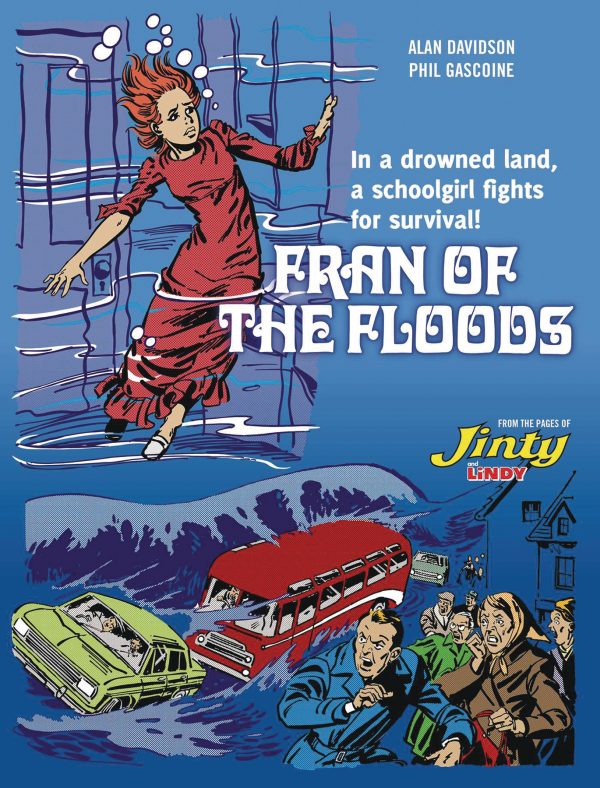
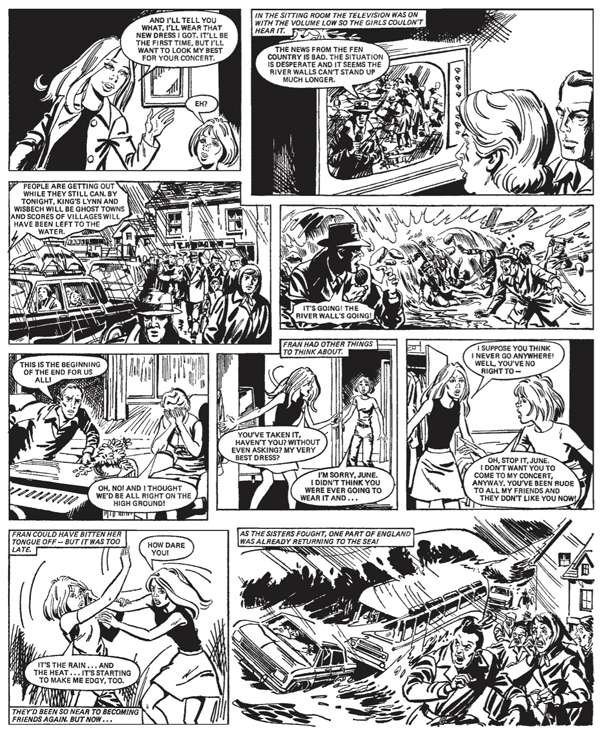
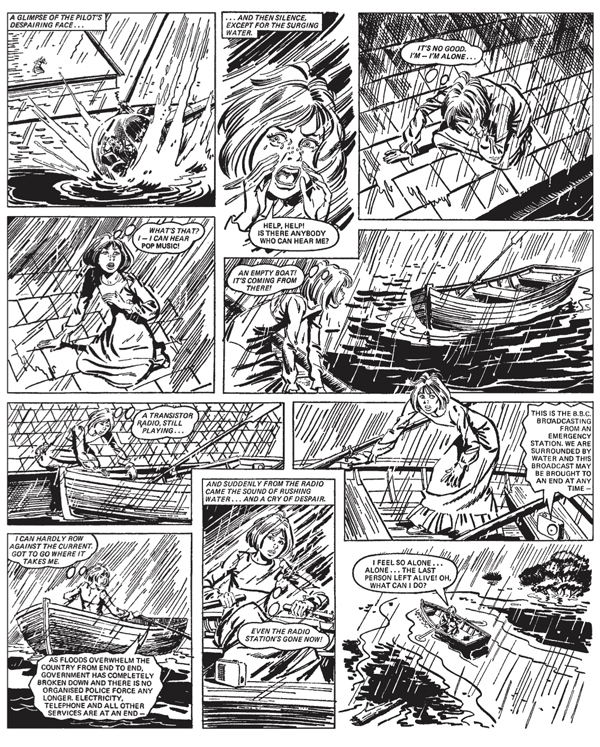
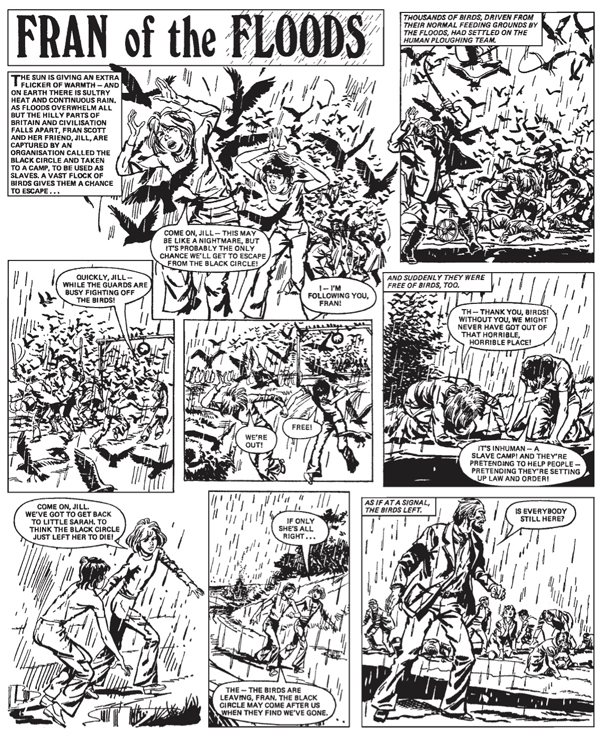



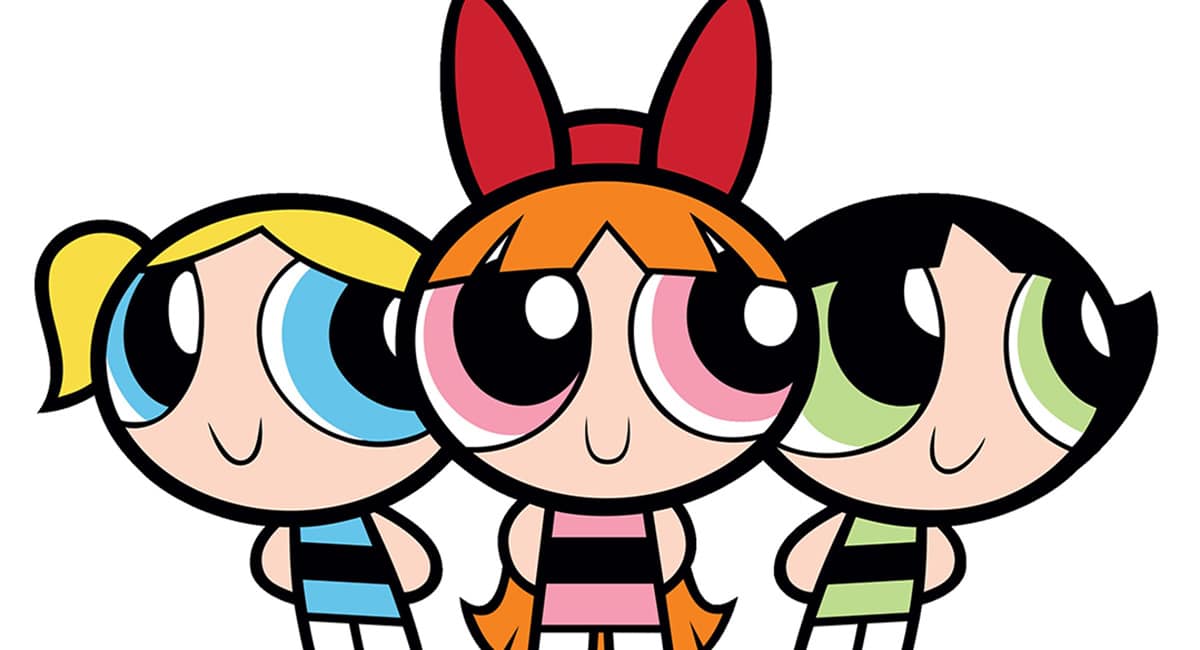

If the art in Marvel and DC comics looked this good, I might still be reading them.
Comments are closed.